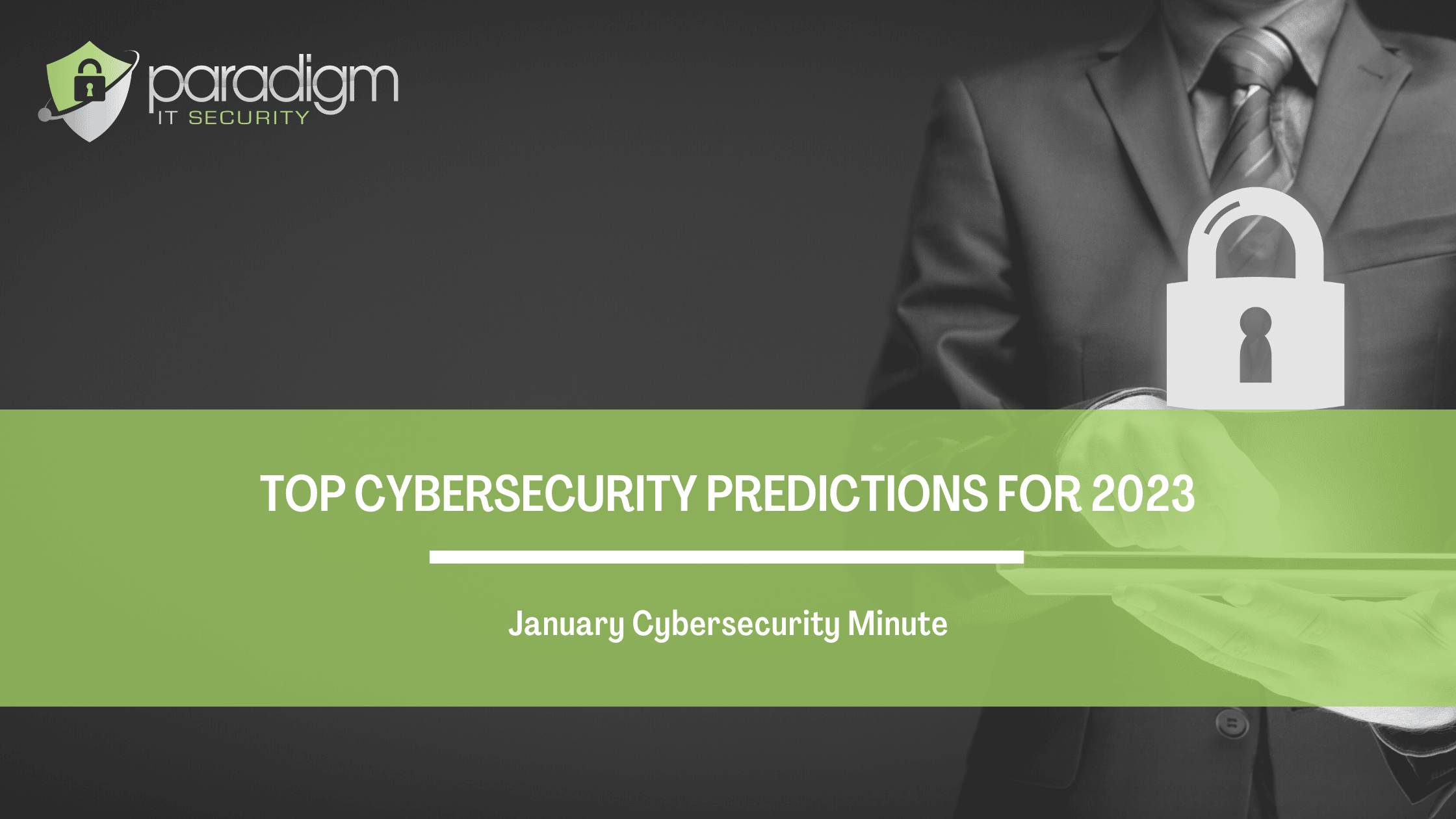The cybersecurity world never stands still, with threats and the technology to combat them constantly evolving, cybercrime, unfortunately, continues to be an industry on the rise. Just last year, the FBI estimated an internet crime cost of $6.9 billion. Predicting what might happen in 2023 is difficult; however, some experts are willing to put on paper their thoughts and what to keep an eye out for.
Top cybersecurity predictions for 2023:
- Cyber-criminals attempting to coerce and extort trusted insiders to commit malicious acts will be a growing trend in 2023.
- Open-source software will remain an attractive target for attackers. Open source’s software supply chain attacks have increased an average of 742% yearly since 2019, and there’s no reason to believe next year will be different.
- There’s a very real possibility that 2023 could be the year for more geopolitically motivated cyber-attacks targeting the government, key industries, and critical infrastructure. Transportation, financial institutions, oil and gas will be at the core of these attacks. Cyber-attacks tie up resources and cause massive operations and financial damage.
- The current economic downturn will drive more sophisticated cybercrime and companies may not be able to withstand the financial impact of cybercrime. Cybercriminals will be looking for new ways to make money quickly, fueling a growth in online fraud from the most basic scams to highly sophisticated ransomware extortion.
- Artificial Intelligence (AI) will play a role in combating cyber-attacks. AI and machine learning will help protect companies, individual projects and core services, while identifying deployed open-source programs and applying an automated security analysis and solution.”
- Businesses will increasingly turn to third-party providers to fend off threats. In 2022, the cybersecurity landscape grew increasingly more complex, resulting in frequent and harmful activity from threat actors. Yet, market conditions limited ways to combat these threats as security decision-makers have been traditionally pressured to do more with less. Out of these challenges emerged a serious need for organizations to shore up their defenses in a holistic yet affordable way. Providers that offer both preventative and reactionary security tools, along with partnerships with cyber insurance and remediation experts, will have the edge.
- Increase in work from home model will lead to more phishing scams. Therefore, companies will need to take proactive steps to mitigate these threats, including regular employee training, encrypting critical data, and ensuring strict compliance to security patches and updates across their extended enterprise.”
- We’ll see cybercriminals moving away from cryptocurrency due to the current financial instability and the fact that crypto is not anonymous; it can be tracked.
- We’ll see the 2024 U.S. election as a priority for cybercrime actors. Campaign and election security will be front and center issues, including discussion around information operations. Globally, China and Russia will continue to focus heavily on regional issues, especially misinformation attacks related to Ukraine.




